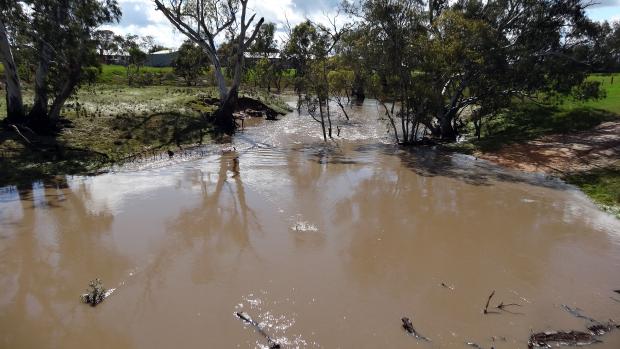Loading
Shaking out the salt facts

It is water that is only suitable for flushing toilets. It’s definitely not suitable for human consumption, and most animals do what they can to avoid it.
Yet it is flowing down one of our region’s major rivers.
The high salinity levels of the Richardson River upsteam of Donald have again been thrown into the spotlight with the annual Saltwatch monitoring results.
Each year, Waterwatch volunteers from across the state head down to their local waterway and measure salinity and water quality levels.
The data is collected and a state-wide snapshot is created.
“There were 117 sites recorded this year, including 37 in our region,” North Central Catchment Management Authority (CMA) Regional Waterwatch Coordinator Cass Davis said.
“Most readings across the state showed salinity levels at acceptable levels and a handful were high.
“Seven sites in Victoria recorded very high results, the highest classification we have. All those sites were on the Richardson River.”
Salinity levels in the Richardson levels have historically been high.
“Low flows combined with groundwater coming up and getting into the river are what causes the high salinity levels,” Cass said.
“It’s across the entire lower catchment. When the river floods, salinity levels drop dramatically. Once the river flows subside, salinity begins to increase at all the sites below the weir. If follow-up flows are not forthcoming, pools develop, water evaporates and hyper salinity levels are not uncommon.”
The Richardson River cuts into an aquifer that contains groundwater that is two thirds as saline as the ocean, and was once part of a giant inland sea.
The North Central CMA works with nearby landholders through a number of projects, including Farming for Sustainable Soils, in an effort to improve the health and productivity of their soils.
Strengthening community engagement and participation is a key component in supporting the Victorian Governments $222 million initiative to improve the health of waterways and catchments across regional Victoria.
Ms Davis said citizen science events Saltwatch Week played an important role in waterway health.
“Collecting samples from local creeks, rivers or streams provides vital information about the health of the region’s precious waterways,” she said.
“Creeks, rivers and streams provide important cultural, recreational and economic benefits to local communities. Their health is important to future users.”
The Waterwatch program is funded by the Victorian Government’s Department of Environment, Water, Land and Planning.
Salinity facts
In normal circumstances, the deep roots of native plants absorb most water entering the soil before it reaches the salt contained in groundwater below the root zone.
Widespread vegetation clearance, poor land use, irrigation and industrial practices have made it easier for salt to be transported to the soil surface or to waterways.
Excessive amounts of dissolved salt in water can affect agriculture, drinking water supplies and ecosystem health.
High levels of salinity in water and soil may cause native vegetation to become unhealthy or die and lead to a decline in biodiversity through dominance of salt-resistant species, potentially altering ecosystem structures.
Source: Australian Government Department of Environment
Click here to find out more about the Saltwatch Week data
